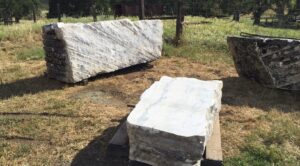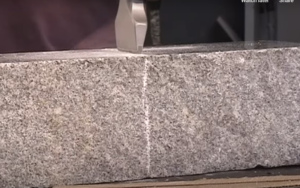Home » Carve » Soft Stone » Stone Queries: Quarry Sap – Jan/Feb 2009

In the book, The Agony and the Ecstasy, Michelangelo is said to have draped the David marble in damp cloth after every carving session. What was he doing?
While I wouldn’t begin to question Michelangelo’s approach, I strongly suspect that description is more artistic license of the author than artistic technique of the sculptor. Damp cloth draping is essential when modeling in clay but as far as I can determine….of little or no value in marble.
All stone contains varying amounts of moisture, or pore water, when freshly quarried. In English-speaking countries this moisture is usually called “quarry sap” and almost always stoneworkers claim that freshly quarried stone carves more easily than stone that has dried out. Often it is further claimed that once a stone has dried out, even immersing it in water will not restore it to its original easily-carved condition. The marble block used for David was quarried, partially carved, and then abandoned for many years before Michelangelo started carving it.
I have carved some limestones and sandstones that soften when wetted, but these have a porosity of up to 30% and contain clay as well. Marble typically contains less than 1% moisture by weight, and many marbles from the Carrara area contain less than 0.1%. As a block of marble dries out the calcium carbonate in the pore water would precipitate along the crystal boundaries but would that be enough to affect carving or prevent later water penetration? And yet something can happen. I have seen a block of statuario marble that changed from solid stone to a sugary, crumbly mass after sitting outside a Pietrasanta studio for a year. I am still looking for any scientific studies that confirm the lore or document precisely the physical and chemical changes occurring with loss of pore water that would affect carving.
I have been warned to avoid unscrupulous stone dealers selling old dry blocks to sculptors who don’t know any better. But how quickly does a block dry out? Not many of us have the luxury of plucking a block from the quarry face as soon as it’s extracted, so I have stopped worrying about stone freshness.
So what was Michelangelo doing? Was he even doing it? The only contemporary reference I have been able to check so far is Vasari’s “The lives of the artists” and he does not mention damp cloth draping. Or did Michelangelo know something about stone that I don’t? You bet he did! But was this it?






We need some kind of descriptive text here.